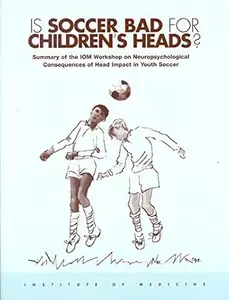
Free Download Institute of Medicine, Board on Neuroscience and Behavioral Health, Janet E. Joy, "Is Soccer Bad for Children's Heads?: Summary of the IOM Workshop on Neuropsychological Consequences of Head Impact in Youth Soccer"
English | 2002 | pages: 37 | ISBN: 0309083443 | PDF | 0,7 mb
To explore whether soccer playing puts youths at risk for lasting brain damage, the Institute of Medicine brought together experts in head injury, sports medicine, pediatrics, and bioengineering. In a workshop entitled "Youth Soccer: Neuropsychological Consequences of Head Impact in Sports," that was held in Washington D.C. on October 12, 2001, these experts presented the scientific evidence for long-term consequences of head injury from youth sports, especially soccer, possible approaches to reduce the risks, and policy issues raised by the subject. Some of the findings presented by the speakers raised concerns, such as the high concussion rate of high school soccer players, the frequent persistence of impaired brain functions even after other symptoms of a concussion disappear, and the need for a better understanding of when it is safe for players to resume playing after they have had a concussion. But other findings were reassuring, such as studies that suggest that with the type of soccer balls used in the United States, heading is not likely to cause brain injury in youths, nor is playing soccer likely to cause permanent brain damage.
This is a summary of the reports from these experts in the field, and the lively discussions that followed them. Topics covered include: causes of head injuries in soccer; how to detect a concussion; the biology of concussion; studies of soccer and football players; the role of protective headgear; and policy implications, such as how to decide when a concussed player should be allowed to return to the playing field.
